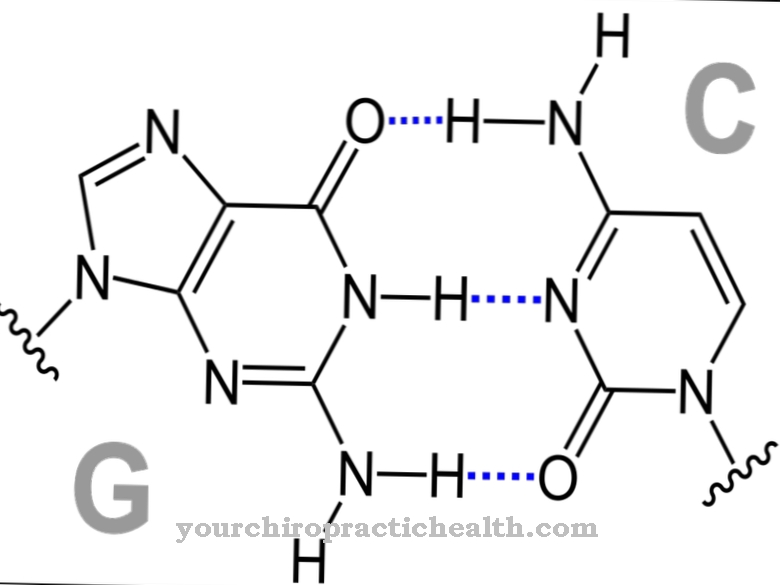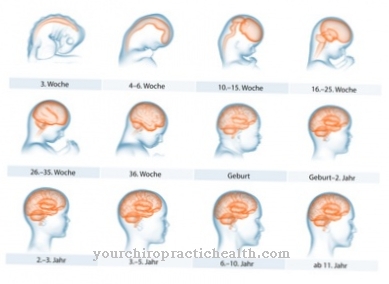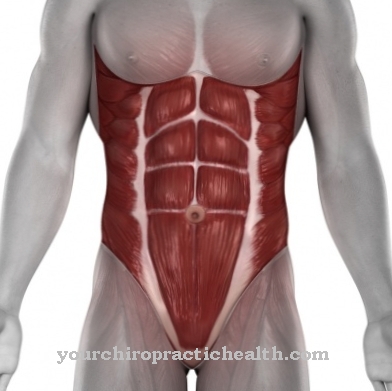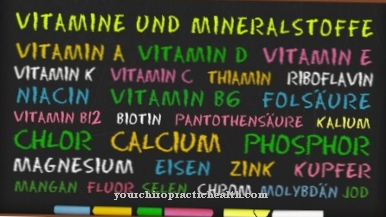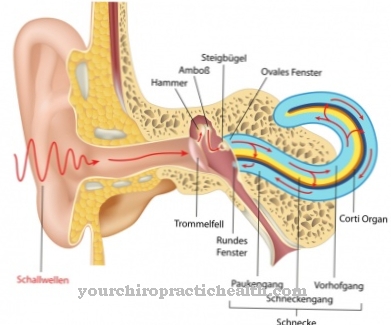Without breathing there is no metabolism and without metabolism there is no life. Thus, humans and all vertebrates are on the Gas exchange instructed by lung breathing.
What is gas exchange?

The oxygen that is so vital for us is extracted from the air we breathe, transported in the body via the bloodstream and metabolized in the cells. In return, the waste product carbon dioxide is excreted through the lungs.
The path of breathing gases leads from the outside world via the respiratory organs mouth or nose, throat, windpipe, bronchi and lungs. As a gas mixture, the air can be divided into the components oxygen, nitrogen, carbon dioxide and various noble gases. However, the organism can only utilize oxygen. It acts as an activator of nutrients to provide energy for the mitochondria, the power plants of our cells.
Function & task
When breathing air is inhaled, the chest expands. The attached diaphragm goes towards the abdomen, a vacuum is created and the lungs fill up. If you exhale, the diaphragm moves up again and, depending on the corresponding ambient air pressure, you can exhale. This mobility of the chest is necessary in order to breathe and in the event of illness to cough up stressful mucus.
Ventilation is required so that the oxygen can find its way in the blood. This is the name given to the activities in the respiratory organs that distribute the air to the alveoli. The blood circulation acts as a transport system.
The main focus of gas exchange in the body is on the lungs. The air that is preheated and humidified in the bronchi reaches the two lobes of the lungs. They consist of the smallest air sacs, the alveoli. These are connected to the finest capillary vessels via a permeable membrane. They in turn connect via ramifications in increasingly larger blood vessels until they take over their transport function as arteries and veins via the heart.
Exactly the other way around is the exchange of used exhaust air. This is where the harmful carbon dioxide gets into the alveoli.There it is briefly stored in order to then leave the organism with the expelled air.
The human organism needs around 0.3 liters of oxygen per minute if it is not moving too much. If the person is physically active, the oxygen consumption increases proportionally, as more oxygen is metabolized in the muscle cells. That is around 10,000 to 20,000 liters of air per 24 hours that the organism has to process in the lungs.
The individual elements of the respiratory tract have additional tasks. There are three phases of gas exchange: first, the breathing air is actively transported into the lungs, from there it is diffused into the bloodstream and then has reached its destination in the cells of the tissue.
Oxygen is needed everywhere in the human organism, especially in the brain. The oxygen is transported to all parts of the body via the red blood cells, the erythrocytes. There it is bound to the blood pigment hemoglobin. Hemoglobin is an organic, iron-containing protein to which oxygen is chemically bound.
The need for oxygen contributes significantly to the control of breathing. When there is a lack of oxygen, breathing becomes deeper or faster. With long-term lack of oxygen, the blood vessels in the lungs constrict and increase the resistance of the heart to blood flow. This puts a strain on the heart.
You can find your medication here
➔ Medication for shortness of breath and lung problemsIllnesses & ailments
The body can only make optimal use of oxygen if there is a smooth exchange of gases. However, various diseases can seriously disrupt this exchange.
For example pulmonary fibrosis. Here, healthy lung tissue is transformed into scars-like connective tissue. This can be caused by infections caused by certain pathogens or by a weak heart. Inhaled harmful substances such as dust or certain solvents can also be causative factors.
Another disease that makes the oxygen supply difficult is pulmonary emphysema. The alveoli are destroyed and their partitions, the membrane, are dissolved. This creates bubble-like structures in which the breathable air accumulates. Air is then present in the lungs, but there is still shortness of breath and the organism increasingly suffers from a lack of oxygen. Smoking, toxic substances and frequent infections of the respiratory tract can be the cause.
So-called pneumonia can pose an acute risk to the functioning of the gas exchange. This pneumonia is caused by bacteria - Streptococcus pneumoniae. But viruses and fungal infections can also be a trigger. The alveoli, the lung tissue and the associated capillary vessels can be affected by this inflammatory process.
Chronic obstructive pulmonary disease is another disease that significantly disrupts the body's oxygen supply. It is certainly an umbrella term for airway-constricting conditions. Too little oxygen can be inhaled and just as little can the carbon dioxide be exhaled. This can lead to respiratory depression, which significantly disrupts gas exchange.
Cystic fibrosis becomes life-threatening as it progresses. Affected people suffer from thick, difficult-to-cough mucus. They form the breeding ground for bacteria and pathogenic germs. Defense cells are formed by the body that release inflammatory substances. The mucous membrane is damaged and nuclear material is released from the cells, which further increases the toughness of the mucus.
A blood gas analysis can provide information on respiratory diseases. The values of oxygen in comparison to carbon dioxide are compared and the pH value is also determined.

